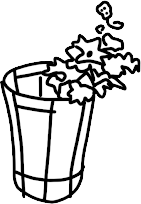Current Space is pleased to present the joint exhibition of Sophia Belkin and Suzanna Zak. The artists in this exhibition use photography as a launching point to explore the surface qualities of the materials depicted: sap, skin, juice, asphalt, dirt, dust, mud, and wood. Belkin and Zak juxtapose these materials with objects found within the vicinity of Current Space. Through object-making and collaborative installations Belkin and Zak decontextualize these forms and reassign them new meanings – highlighting the complexities of the ‘Spirit of Place.’
Curated by: Ginevra Shay
Curatorial Assistant: Emily Mason
On View March 8th – 30th, 2014
Gallery Hours Saturday and Sunday 12-4pm
Opening Reception 7 – 10pm, March 8th
Current Space
421 N. Howard St.
Baltimore, MD, 21201
Interview between artists Suzie Zak, Sophia Belkin, and curator Ginevra Shay
GS: Suzie and Sophia, can you talk about your personal relationship and history?
SB: We met at MICA in 2009 and started making work together a few years later. Our first collaborations were inspired by weekend adventures and road trips outside of the city. the very first work we made together was a photo of a trail marker that Suzie took, and I jokingly poured blue paint all over.
SZ: Sophia started making work in a studio space before I did. Seeing her process and works in one particular space had a huge impact on me. I was inspired to see the way that art could covert a physical space. I loved going to her studio and rearranging the components of some of her pieces. At some point I realized that I could treat my photographs the same way.
GS: We spent a number of months developing the concept of this exhibition. Can you talk about that process and your research methodologies for creating new work?
SZ: Both physical distance and traveling together have played into the process. We spent time together in the Yukon, and I live in Los Angeles while Sophia lives in New Orleans. There was a certain quality of materials and objects out in the world that we decided we were interested in, that could be found in all of these very different locations. Our process included everything from sending picture text messages of people covering their agave plants in blankets to prevent them from freezing, to sharing Rilke poems about the act of looking.
SB: After accumulating the source material we started pulling out certain recurring imagery, and transferring those forms and gestures into other mediums. Creating the book was a really important step in consolidating our research for the show and bringing the works full circle. The book functions as an inventory of forms that were then altered and distorted through a copy machine. The immediacy of the mark making in the book sort of mirrors the way that we approached the alterations to the photographic works in the show.
GS: When looking at the exhibition “Find No Two Suns” I see the work as multiplicities forming a whole. Though we’ve never talked about William Christenberry while preparing for this exhibition the show makes me think of this quote that he once said about his relationship to photography, “I think that often times art can make an outsider look back on something he has never been part of, and make him feel like he has always been part of it.”
What is your relationship with photography and it’s place in “Find No Two Suns?”
SB: For me the photographs serve essentially as a jump off point for the sculptural work. I usually latch on to something in the narrative of the photograph and introduce other materials to continue the story. The foundation for the window installation at Current Space was an image of a shed made out of mirrors. In response to this image, Suzie and I accumulated a bunch of found materials and scraps that mimicked the textures and forms found in the photo but also addressed the hap-hazard and dilapidated character of the shed itself.
SZ: Photography is a way to engage with my environment. It changes my perception to a more accurate and specific vision, like when hunting for mushrooms in the forest. While narrative and storytelling are important to me, in “Find No Two Suns” I try to deemphasize nostalgia. Altering photographs that Sophia takes helps me focus on what is actually depicted in the image.
GS: Can you talk a little bit about the ideas behind deconstructing the gallery and establishing a new space?
SZ: We wanted to consider and activate as many planes of the physical space as possible. It was also important for us to acknowledge the space itself, like a random hole in the floor, rather than to treat the gallery as an implied blank space. By altering large areas of the walls, and creating pieces that don’t have boundaries that prevent them from existing on two walls, the end result is a potentially transformed space.
SB: When we first started thinking about this show we wanted to figure out how to deliver the feeling and imagery of a distant place to people standing in a gallery thousands of miles away from it. Eventually our goal changed from trying to describe this place to formulating a new one by using the images themselves as the starting point for our spatial exploration and architectural interventions.







